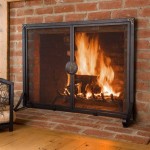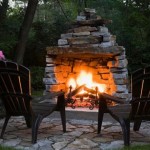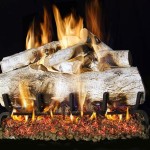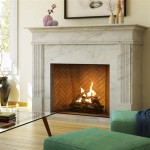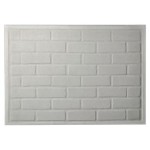What Paint for Stone Fireplace: A Comprehensive Guide
Painting a stone fireplace can dramatically transform a room, offering a fresh aesthetic and updating its appearance. However, selecting the correct paint is crucial for achieving a durable, attractive finish that withstands the unique challenges presented by a stone surface. This article provides a detailed exploration of the various paint options suitable for stone fireplaces, factors influencing paint choice, and essential preparation and application techniques.
Stone fireplaces, whether constructed from natural stone, manufactured stone veneer, or brick, present distinct properties that necessitate careful consideration when selecting a paint. These properties include porosity, texture, and exposure to heat. The paint must adhere properly to the stone's surface, resist cracking or peeling due to temperature fluctuations, and maintain its color and finish over time. Choosing the wrong paint can lead to unsatisfactory results, premature deterioration, and costly repairs.
Key Considerations Before Painting
Before delving into specific paint types, several critical factors should be considered to inform the selection process. These factors include the type of stone, the desired aesthetic, the fireplace's usage frequency, and the existing condition of the stone or previous paint layers.
The type of stone significantly impacts paint adhesion and finish. Natural stone, such as limestone, granite, and slate, varies in porosity and texture. Manufactured stone veneer, a lighter and more cost-effective alternative, often has a smoother, more consistent surface. Brick, while not strictly stone, shares similar porous characteristics and is often treated as such in painting projects. Understanding the specific stone type allows for the selection of a primer and paint that bond effectively to the surface.
The desired aesthetic is another crucial factor. A matte finish provides a subtle, understated look, while a satin or semi-gloss finish offers a slight sheen and enhanced durability. High-gloss finishes are less common for stone fireplaces due to their tendency to highlight imperfections. The choice of color also plays a significant role in achieving the desired aesthetic, ranging from classic neutrals to bold, contemporary hues.
The frequency of fireplace usage influences the paint's durability requirements. A fireplace used regularly will be subjected to higher temperatures, requiring a heat-resistant paint that can withstand repeated heating and cooling cycles. A fireplace used infrequently may not require such a high level of heat resistance, allowing for a broader range of paint options.
The existing condition of the stone must also be assessed. Cracks, chips, or loose mortar should be repaired before painting to ensure a smooth, even surface. Previous paint layers, if present, may need to be removed or properly prepared to ensure adequate adhesion of the new paint. Cleaning the stone thoroughly to remove dirt, grime, and soot is essential for optimal paint adhesion.
Suitable Paint Types for Stone Fireplaces
Several types of paint are suitable for stone fireplaces, each offering distinct advantages and disadvantages. These include latex paint, acrylic paint, masonry paint, and specialty heat-resistant paints. The choice depends on the factors outlined above and the specific needs of the project.
Latex paint is a popular choice for interior applications due to its ease of use, low odor, and water-based cleanup. It offers good adhesion to stone surfaces, especially when used in conjunction with a suitable primer. Latex paint is available in a wide range of colors and finishes, making it a versatile option for achieving various aesthetic goals. However, standard latex paint may not be sufficiently heat-resistant for frequently used fireplaces. For these applications, a heat-resistant additive can be mixed into the latex paint to improve its thermal performance.
Acrylic paint is another excellent option for stone fireplaces. It offers superior durability and weather resistance compared to latex paint, making it suitable for both interior and exterior applications. Acrylic paint forms a tough, flexible film that resists cracking and peeling, even under temperature fluctuations. It also provides good color retention and resistance to fading. Like latex paint, acrylic paint is available in a variety of colors and finishes. Acrylic latex paint combines the benefits of both latex and acrylic resins, offering enhanced adhesion, durability, and ease of use.
Masonry paint is specifically formulated for use on porous surfaces such as brick, stone, and concrete. It is designed to penetrate the surface, providing a strong bond and protecting the underlying material from moisture damage. Masonry paint is highly durable and resistant to weathering, making it an excellent choice for fireplaces exposed to harsh conditions. It often contains additives that inhibit mold and mildew growth, which can be particularly beneficial in damp environments. Masonry paint is typically available in a limited range of colors, but it can be tinted to achieve custom shades.
Specialty heat-resistant paints are specifically designed for use on surfaces exposed to high temperatures, such as fireplace interiors, stoves, and chimneys. These paints are formulated with heat-resistant pigments and resins that can withstand temperatures up to several hundred degrees Fahrenheit without blistering, cracking, or discoloring. Heat-resistant paints are available in both aerosol and liquid forms, and they are typically applied in thin coats to prevent sagging. While primarily intended for metal surfaces within the firebox, some heat-resistant paints are suitable for use on exterior stone surfaces of the fireplace, particularly those close to the firebox opening.
Regardless of the paint type selected, it is crucial to use a high-quality primer that is compatible with both the stone surface and the chosen paint. Primer serves several important functions, including sealing the surface, improving paint adhesion, and preventing stains from bleeding through the topcoat. A masonry primer is generally recommended for stone fireplaces, as it is specifically designed to penetrate porous surfaces and provide a strong foundation for the paint.
Preparation and Application Techniques
Proper preparation is essential for achieving a professional-looking and long-lasting paint job on a stone fireplace. This includes cleaning the surface, repairing any damage, applying primer, and ensuring proper ventilation.
The first step is to thoroughly clean the stone surface to remove dirt, dust, soot, and any other contaminants. This can be done using a stiff brush and a solution of mild detergent and water. For stubborn stains or soot buildup, a masonry cleaner can be used. Rinse the surface thoroughly with clean water and allow it to dry completely before proceeding.
Next, inspect the stone for any cracks, chips, or loose mortar. Repair any damage using a masonry patching compound or mortar mix. Allow the repair material to dry and cure according to the manufacturer's instructions before sanding the surface smooth. Remove any loose or flaking paint using a wire brush or scraper.
Once the surface is clean and repaired, apply a coat of masonry primer. Use a brush, roller, or sprayer to apply the primer evenly over the entire surface. Allow the primer to dry completely according to the manufacturer's instructions. Primer is essential for proper adhesion on porous surfaces. It assures that the top coat of paint adheres to the stone face properly.
After the primer has dried, apply the chosen paint using a brush, roller, or sprayer. Apply thin, even coats, allowing each coat to dry completely before applying the next. Avoid applying too much paint in one coat, as this can lead to drips, runs, and uneven drying. Depending on the desired coverage and finish, two or three coats of paint may be necessary.
Ensure proper ventilation during painting to protect yourself from harmful fumes. Wear a respirator or mask, especially when using oil-based paints or solvents. Open windows and doors to allow for air circulation. If painting indoors, use fans to circulate the air and exhaust fumes outside.
After the paint has dried completely, inspect the surface for any imperfections. Touch up any areas as needed. Allow the paint to cure fully before using the fireplace. Curing times can vary depending on the type of paint and the environmental conditions. Consult the paint manufacturer's instructions for specific curing recommendations.
Troubleshooting Common Painting Problems
Despite careful preparation and application, certain problems can arise when painting a stone fireplace. These problems include paint peeling, cracking, blistering, and discoloration. Understanding the causes of these problems and how to prevent them is crucial for achieving a successful paint job.
Paint peeling is often caused by poor surface preparation, inadequate priming, or using the wrong type of paint. Ensure the surface is thoroughly cleaned and primed before painting. Use a masonry primer that is compatible with the stone surface and the chosen paint. Avoid using paints that are not specifically designed for use on stone or masonry.
Paint cracking can occur due to temperature fluctuations, excessive moisture, or using a paint that is too rigid. Choose a paint that is flexible and durable, such as acrylic or masonry paint. Ensure the stone is dry before painting, and avoid painting during periods of high humidity. Consider using a heat-resistant paint for fireplaces that are used frequently.
Paint blistering is typically caused by moisture trapped beneath the paint film. Ensure the stone is completely dry before painting, and avoid painting in direct sunlight, which can cause the surface to heat up and release moisture. Use a breathable paint that allows moisture to escape. If blistering occurs, scrape off the affected paint, allow the surface to dry, and repaint with a breathable paint.
Paint discoloration can be caused by exposure to sunlight, heat, or chemicals. Use a paint that is resistant to fading and discoloration. Avoid using harsh cleaning chemicals on the painted surface. Consider applying a clear sealant to protect the paint from UV damage and chemical exposure.
By carefully considering the factors outlined in this article, selecting the appropriate paint, and following proper preparation and application techniques, individuals can achieve a durable, attractive, and long-lasting finish that enhances the beauty of their stone fireplace.

How To Painting The Stone Fireplace White Greige Design

How To Paint A Stone Fireplace True Value Hardware

How To Paint A Stone Fireplace An Easy Diy Project Allisa Jacobs

Painted Stone Fireplace Makeover The Little By Home

Black Painted Fireplace How To Paint Stone

How To Easily Paint A Stone Fireplace

How To Easily Paint A Stone Fireplace

To Paint Or Not Stone Tile Fireplace More
How To Paint A Stone Fireplace Painting Guide Brick Anew

Black Painted Stone Fireplace
Related Posts



